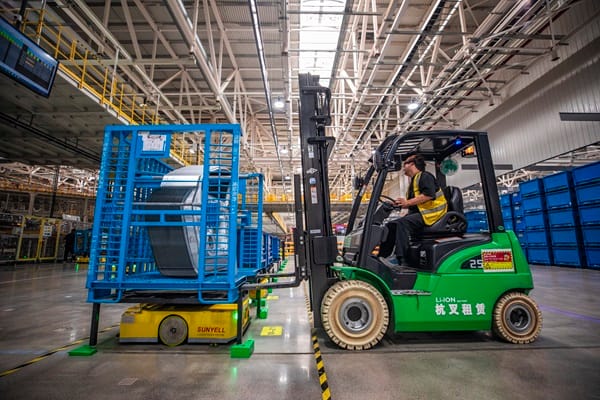The global supply chain is all about modern logistics today, but it is also fragmented and complex. With different carriers, ports, customs agencies, and logistics companies all using their own unique systems and data formats, it is a recipe for miscommunication, inefficiency, and costly delays.
This lack of a common language is particularly evident in the “track and trace” process. When a container moves from a carrier’s system to a port’s system to a customs agency’s system, the data often doesn’t transfer seamlessly. This means that a container’s location, status, and important details can get lost or have to be manually re-entered, making it nearly impossible to have a single, universal view of a shipment’s progress.
The solution lies in embracing a new approach, so the technologies speak the same language. The global shipping industry needs to move beyond its fragmented systems and adopt a common set of digital standards. This is the only way to unlock the full potential of digitalization and create a seamless, interconnected network where information flows as freely as goods.
The problem with the status quo
The fragmented nature of global shipping is not just an inconvenience; it creates significant problems that harm every party in the supply chain.
Data silos and lack of interoperability
Different players in the shipping world, from the carriers who move the goods to the ports that receive them, often use their own proprietary software. These systems, however, don’t “talk” to each other.
This creates what are known as data silos, where vital information is trapped in one system and can’t be automatically shared with another.
As a result, staff are forced to manually re-enter data from one platform to another, a process that is not only tedious but also prone to human error, leading to mistakes that can cause a container to be delayed or even misrouted.
Inefficient processes and higher costs
The reliance on these disconnected systems and, in many cases, outdated paper documents, directly translates into inefficiency and higher costs. Every time a bill of lading or customs form has to be printed, signed, scanned, and emailed, it adds administrative cost and time to the process.
This manual labor is expensive and slows down the entire supply chain, making it less responsive and adaptable. The accumulated delays and errors caused by these inefficient processes can also lead to additional fees and surcharges, driving up the final cost of shipping for everyone involved.
Reduced visibility and supply chain risk
Perhaps the most critical drawback of a fragmented system is the lack of real-time visibility. When data is not seamlessly shared, it becomes impossible to have a clear, up-to-the-minute view of a shipment’s journey.
This makes it difficult to monitor for potential issues, such as a port closure or a weather-related delay.
Without this comprehensive visibility, companies are less prepared to respond to unexpected events, leaving them vulnerable to supply chain disruptions and unable to provide accurate updates to their customers. This lack of transparency increases risk and makes the entire system less resilient.
The power of digital standards
The adoption of digital standards is the crucial solution to the problems of a fragmented global shipping industry. They provide a new, interconnected backbone for global trade.
Creating a common language
Digital standards act as a universal framework for data, much like a shared language. Instead of each system speaking a different dialect, these standards ensure that all data, from a container’s ID number to its destination port, is formatted and labeled consistently.
This allows different platforms, whether they’re run by a shipping line or a customs authority, to understand and interpret information from one another without any confusion. This foundational “common language” is what makes all other digital advances in the supply chain possible.
Enabling interoperability and automation
This common language directly enables interoperability, which is the ability for different systems to work together seamlessly. When data can flow smoothly and automatically between carriers, ports, customs, and shippers, it eliminates the need for manual data re-entry.
This automation not only speeds up processes but also drastically reduces the risk of human error. The system becomes a cohesive whole rather than a series of disconnected parts, allowing for a faster, more efficient, and less costly flow of goods.
Enhancing visibility and collaboration
Standardized data is the key to achieving true end-to-end visibility. Once data is consistently formatted and easily shared, everyone involved in a shipment can have a single, real-time view of its journey.
This transparency fosters better collaboration and more informed decision-making. For example, if a shipment is unexpectedly delayed, all parties can see the issue immediately and work together to find a solution, minimizing disruption and risk for the entire supply chain.
The road to adoption
Despite the clear benefits, the journey to a fully standardized digital shipping industry will face its share of obstacles.
One of the biggest hurdles is overcoming resistance to change. The global shipping industry is built on long-standing traditions and processes, and convincing stakeholders to abandon their familiar ways for new technology is a significant challenge. The resistance often stems from concerns about cost, complexity, and a lack of understanding of the long-term benefits.
This transition can only happen once all key players are involved. Major industry associations, leading carriers, and technology innovators must work together to develop, promote, and implement these standards.
A successful transition will likely involve a phased approach. Rather than trying to standardize every single process at once, the industry can start with key, high-impact documents. Once this foundation is in place, the industry can gradually expand standardization to other areas, such as customs declarations, booking confirmations, and cargo manifests.
Conclusion
Ultimately, global digital standards are no longer a luxury but a necessity. They are the essential building blocks for a more efficient, resilient, and transparent global supply chain. With a common language and enabling seamless data flow, these standards will unlock unprecedented levels of speed, accuracy, and trust across the entire logistics network.
Get real time update about this post category directly on your device, subscribe now.







